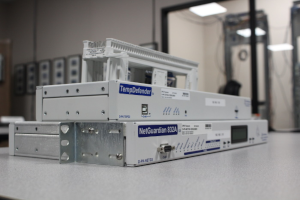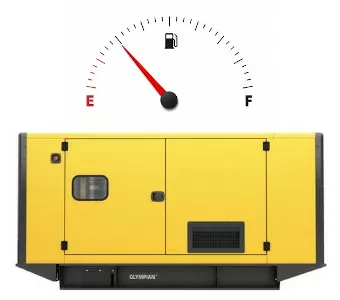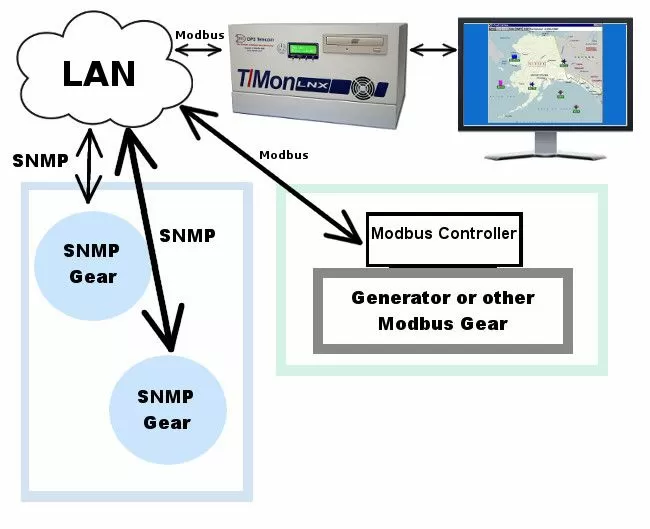Check out our White Paper Series!
A complete library of helpful advice and survival guides for every aspect of system monitoring and control.
1-800-693-0351
Have a specific question? Ask our team of expert engineers and get a specific answer!
Sign up for the next DPS Factory Training!

Whether you're new to our equipment or you've used it for years, DPS factory training is the best way to get more from your monitoring.
Reserve Your Seat TodayIf your remote site relies on diesel fuel for power, you know how important it is to accurately track tank levels. A single outage can lead to:
You need a monitoring solution that not only provides accurate, real-time data but also adapts to your specific needs.
I'll show you how the right diesel fuel monitoring systems offer the flexibility, rugged reliability, and proactive capabilities you need. You'll also learn how to integrate this solution into your existing network management environment, reduce site visits, and prevent costly downtime. Let's begin!

Every remote site with important equipment needs good monitoring. Make sure you're aware of all the problems (both obvious and non-obvious) that happen when you run out of fuel:
Relying on manual fuel-gauge checks or guesswork simply isn't enough. If you can't see your fuel levels in real time, you're rolling the dice on your network reliability.
Traditional fuel monitoring strategies often involve physically sending technicians to every remote site for a dipstick measurement or manual reading. This is inefficient. It also increases the risk that you'll discover a critical fuel shortage much too late.
Imagine if you got an alert before you ran dangerously low on diesel. That's exactly what the right monitoring systems provide.
By continuously tracking your tank levels, you'll know when it's time to schedule refueling - well before you're at risk of an outage. This proactive strategy doesn't just save you time and money. It also gives you peace of mind.
With real-time data and early warnings, you can coordinate refueling based on actual consumption and site needs, rather than somebody's "best guess." You can also avoid having multiple unnecessary refills when levels are still sufficient, thus optimizing your fuel management schedule. By striking the right balance - refilling promptly but only when it's truly needed - you can save both capital (not replacing damaged/destroyed equipment) and operational costs (time/labor/fuel).
Pro tip: Use these proactive notifications to batch multiple site refills in a single trip. This will drastically reduce the cost and complexity of delivering fuel. This approach is especially useful for network operators who manage dozens or even hundreds of sites across large geographic areas.
As we've discussed, manual fuel checks cost time and money. Sending a tech out to every remote site is neither efficient nor cost-effective. This is especially true when staff often have to travel long distances or navigate challenging terrain (sometimes via Snowcat or helicopter). When you automate your fuel monitoring, you unlock several key benefits:
By remotely viewing fuel levels, managers and technicians can make data-driven decisions about when to schedule refills, how to allocate staff, and even how to balance workloads among team members.
Now, you don't need to send someone out "just in case" the fuel might be low. You'll know exactly when it's time to refuel because your sensors tell you - often days or weeks in advance.
These data-driven decisions pave the way for better asset management across the board. Remote monitoring data can be fed into your broader analytics platforms, potentially revealing patterns in fuel consumption.
You might discover, for example, that certain sites use more fuel in cold weather, while others remain relatively steady year-round. Armed with those insights, you can optimize refueling routes to coincide with typical consumption patterns, greatly reducing operational costs.
If you manage more than one site, you already know how complicated it can be to keep track of fuel levels everywhere at once - especially if those sites are scattered across a region, state, or even an entire country. There are a few ways you can address these issues:
These are incredibly valuable if you're juggling responsibilities across dozens of remote sites. Rather than logging into separate systems for each site, you can consolidate all alarms and data in a central platform. This "big picture" view gives you immediate insight into which sites need attention now and which can wait.
Case in point: Some DPS clients operate in mountainous regions with limited road access, where winter weather can render certain routes impassable.
By monitoring tank levels remotely, they can schedule refueling runs before heavy snowfall blocks roads. This reduces the risk of generators going offline when conditions are at their worst. A single eliminated helicopter flight usually pays for an entire remote monitoring device, and you're likely to prevent many in the 10-15 years you own a high-quality RTU.

Your remote sites might face extreme temperatures, moisture, dust, salt air, or even intrusion by wildlife. You need monitoring equipment tough enough to handle it all. An off-the-shelf solution designed for mild indoor environments often isn't enough in rugged outdoor areas (where telecom and utility infrastructure usually "live").
You should make sure your system has:
Extreme environments don't just affect hardware; they can also impact data accuracy. Invest in strong sensor technologies that remain accurate over a wide operating range so you don't get wildly varying readings. Consistency is key to trustable data.
DPS Telecom has developed several diesel fuel monitoring solutions built around "D-Wire" technology that allows for accurate, real-time fuel data. The essential hardware components of these fuel monitoring systems include:
Putting these elements together creates a system that provides real-time visibility into your fuel levels. If your tank is getting low, you'll be notified long before a crisis happens.
Although diesel fuel monitoring might be your most immediate concern, the flexibility of the RPS AB6 and D-Wire technology allows you to expand monitoring into other areas:
By bringing all of these monitoring points together, you get a full view of your site's operational health. You'll save time that would otherwise be spent switching between different monitoring tools.
Every site is unique, and DPS Telecom offers custom solutions to match your exact needs. Whether you're managing remote diesel tanks for backup generators, critical infrastructure, or even a combination of renewable energy sources, you need a monitoring system that stands up to the challenge.
If your site has special requirements - like hazardous-area sensors, redundant fiber paths, or unique enclosure constraints - we'll build you a custom proposal.
In many cases, small modifications like cable length adjustments, different connector types, or specialized sensor housings can make all the difference between a standard system and a solution that fits your needs perfectly.

Andrew Erickson
Andrew Erickson is an Application Engineer at DPS Telecom, a manufacturer of semi-custom remote alarm monitoring systems based in Fresno, California. Andrew brings more than 18 years of experience building site monitoring solutions, developing intuitive user interfaces and documentation, and opt...